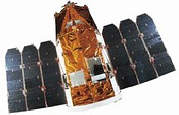chung cư gamuda, biệt thự gamuda, liền kề gamuda, chung cư goldseason, chung cư valencia, chung cư imperia sky garden,Imperia Sky Garden, Imperia Sky Garden 423 Minh Khai,
EROS A[edit]
EROS A was launched on the Russian Start-1 launcher on December 5, 2000, from the Svobodny Launch Complex in eastern Siberia, to a Low Earth orbit (LEO) altitude of 480 km. The satellite provides commercial images with an optical resolution of 1.8 meters. The satellite orbits earth in a sun synchronous orbit, so that its imaged target is always in daylight. It always crosses the equator at 9:45am local time.
Its dimensions: height: 2.3 m, diameter: 1.2 m, head: 0.7 m. It weighed 250 kg at launch. It was built based on the military reconnaissance satellite Ofeq 3, which was previously built, also by IAI and El-Op, for Israeli government use.
The EROS-A satellite reentered on 7 July 2016.
Another EROS-A satellite was planned but was eventually cancelled.[1]
EROS B[edit]
ImageSat initially planned to launch a similar satellite every 6 years after EROS A.
EROS B was finally launched on April 25, 2006 aboard a Russian Start-1 rocket from the Svobodny Launch Complex in eastern Siberia. The satellite offers an optical resolution of 70 cm (about two feet), and as of launch date plans were to use it to monitor Iran's developing nuclear program for potential threats to Israeli security.
Originally, a constellation of 4 EROS-B satellites was planned, but the number of satellites was in the end reduced to just one.[2]

optical resolution of 70 cm


